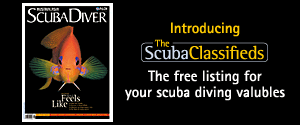- Home
- Directory
- Shop
- Underwater Cameras - Photographic Accessories
- Smartphone Housings
- Sea Scooters
- Hookah Dive Systems
- Underwater Metal Detectors
- Dive Gear
- Dive Accessories
- Diving DVD & Blu-Ray Discs
- Diving Books
- Underwater Drones
- Drones
- Subscriptions - Magazines
- Protective Cases
- Corrective Lenses
- Dive Wear
- Underwater Membership
- Assistive Technology - NDIS
- On Sale
- Underwater Gift Cards
- Underwater Art
- Power Stations
- Black Friday Sale
- Underwater Bargain Bin
- Brands
- 10bar
- AOI
- AquaTech
- AxisGo
- Backscatter Underwater Video and Photo
- BLU3
- Cayago
- Chasing
- Cinebags
- Digipower
- DJI
- Dyron
- Edge Smart Drive
- Eneloop
- Energizer
- Exotech Innovations
- Fantasea
- Fotocore
- Garmin
- Geneinno
- GoPro
- Hagul
- Hydro Sapiens
- Hydrotac
- Ikelite
- Indigo Industries
- Inon
- Insta360
- Intova
- Isotta Housings
- Jobe
- JOBY
- Kraken Sports
- LEFEET
- Mirage Dive
- Nautica Seascooters
- Nautilus Lifeline
- NautiSmart
- Nitecore
- Nokta Makro
- Oceanic
- Olympus
- OM System
- Orca Torch
- Paralenz
- PowerDive
- QYSEA
- Scubajet
- Scubalamp
- Sea & Sea
- SeaDoo Seascooter
- SeaLife
- Seavu
- Shark Shield
- Sherwood Scuba
- Spare Air
- StickTite
- Sublue
- Suunto
- SwellPro
- T-HOUSING
- Tusa
- U.N Photographics
- Venture Heat
- XTAR
- Yamaha Seascooter
- Youcan Robot
Sharks and Rays of Australia

P.R. Last, J.D. Stevens
The waters around Australia are home to the greatest diversity of sharks and rays on Earth. Spookfish, numbfish, stingarees, fiddler rays and cookie-cutter sharks are just some of the 322 shark, ray and chimaerid species illustrated in the latest edition of Sharks and Rays of Australia.
Australia’s sharks, rays and chimaerids — collectively known as Chondrichthyans — are just as intriguing as their names suggest. Their eclectic colours, shapes and patterns reflect environments ranging from remote estuaries to ocean depths.
Their new descriptions, and their striking portraits by watercolourist Roger Swainston, will help to guide the identification and conservation of these diverse species.
The first edition of Sharks and Rays of Australia was produced in 1994. Since then, 29 species have been discovered in Australian seas and more than 100 species have been named and formally described.
As well as documenting these advances, the new edition includes updated species classifications and descriptions, distribution maps, line illustrations by Georgina Davis, family keys and outlines of Chondrichthyan biology and interactions with humans. The book catalogues a rich seam of Australia’s marine biodiversity, providing an indispensible compendium for scientists and a baseline reference for the fishing industry.
“More than a quarter of the world’s Chondrichthyan fauna is found in Australian seas, and many of the species that live on the continental slope have only been discovered in the past three decades,” says Dr Last, who is the director of the Australian National Fish Collection at CSIRO in Hobart.
“In the same period, growth in the trade of shark fins has fuelled increasing demand for shark and ray products, driving significant increases in shark take by commercial fisheries worldwide,” he says.
Dr Stevens says sharks and rays live at the top of the food chain and play an important role in marine ecosystems. “But many do not reach sexual maturity until 10–12 years old, so the number of young they produce is closely linked to the size of the adult population. There is growing concern about the sustainability of stocks throughout the world, and several species are listed by national and international bodies as endangered,” he says.
Shark and ray species featured in the book include:
- Harrisson's Dogfish, Centrophorus harrissoni, is found mainly off south-eastern Australia and matures late giving birth to litters of only two pups. Populations have declined by more than 95% due to fishing by trawl, net and longline gear across its range. Management controls include trip limits and closed areas. The species has been nominated for protection under the EPBC Act, and is classified as critically endangered on the IUCN Red list.
- The Blue Shark, Prionace glauca, is a relatively fast growing and wide ranging species that makes trans-Atlantic and trans-hemisphere migrations. It is one of the world’s most heavily fished sharks with huge numbers caught, particularly by oceanic longline fleets.
- The Maugean Skate, Zearaja maugeana, is confined to estuarine habitats in the Bathurst and Macquarie harbours off south-western Tasmania, mainly in shallow waters. Its populations are small and could easily be further reduced by human activity and climate change.
Sharks and Rays of Australia is an essential reference for professional and recreational fishermen, divers, naturalists, students, fish and conservation biologists, and anyone interested in sharks and rays.
A massive book - over 3kgs - Publication date: February 2009, Hardback, Colour photographs, 656 pages, 302 x 225mm - ISBN: 9780643094574
All prices are in Australian Dollars ($AU). You can do a currency conversion here
Your Order
You have no items in your order yet







